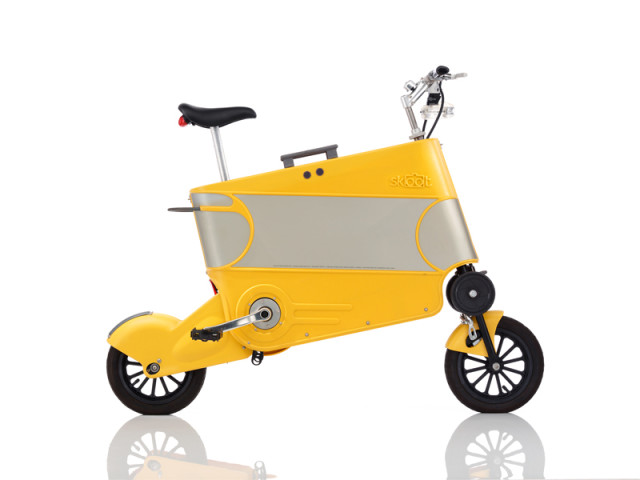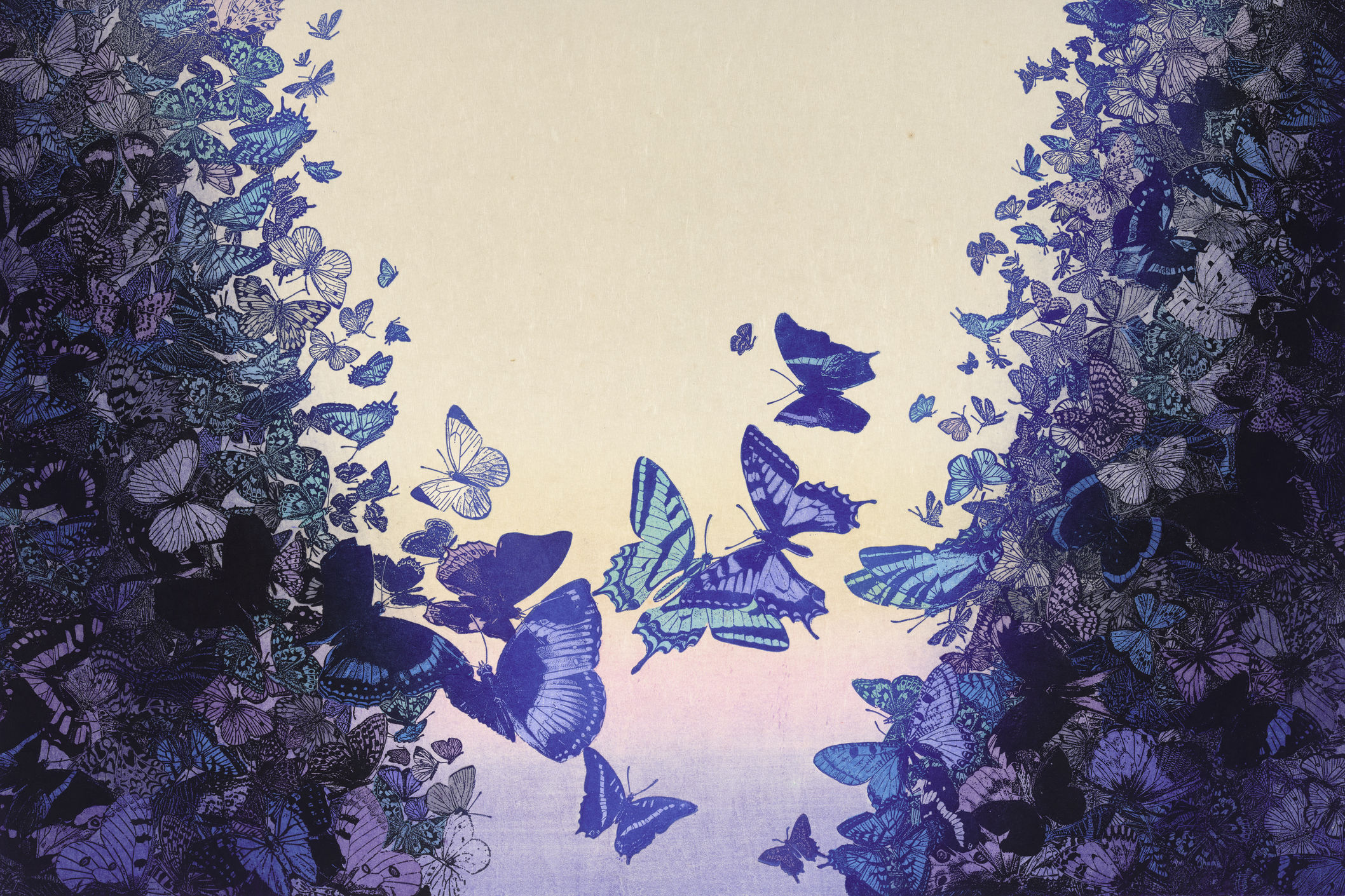Review: ‘Cyclepedia,’ ‘Man/Woman,’ and a Thousand Naked Cyclists

For individual's privacy, privates have been blurred.
Image: Marc Kochanski
In a stroke of promotional genius, the art museum, in honor of its new Cyclepedia exhibition that opened over the weekend, offered to host the starting party for the World Naked Bike Ride, and then went one pedal further: to let riders in under a ‘pay what you wear’ sliding admission—one dollar per item of clothing on your body, or free for the full monty (shoes excepted).
The result was downright European (or Portlandian), turning an often quiet and stuffy institution into a party of unabashed, artistic nakedness. Some wore glitter; others body paint, from handprints on their butt cheeks to full on racing stripes. A troupe of boys donned Marie Antoinette wigs, white face makeup, mustaches, and heels. There were a spackling of masks and more than a dusting of bright underwear for the more self-conscious (in full disclosure, out of a sense of professional propriety, this critic paid a dollar to get in).

Gaston Lachaise's 'Standing Woman'
Image: Portland Art Museum
At it’s naked heart, the event was a celebration of the beauty of the body—all bodies—that’s normally only allowed in a museum when those bodies have been immortalized in some artistic medium.
While it was pegged to the Cyclepedia exhibit, which was packed by cyclists avid and amateur alike (and an acro-balancing troupe while I was there), the real life/art synergy was happening in the atrium, where three immense bronze nudes by Gaston Lachaise held court as part of his Man/Woman exhibition. Two of the statues—one titled Man, the other Standing Woman—stood regally, chests raised, gazes set heroically on the horizon—monumental archetypes of their sexes, completely unencumbered by their nudity. Below them, nude pedalers emulated their poses for the camera, each of their bodies different from the statues in its own unique way, but equally confident in its form.
The rest of the Man/Woman exhibition (along with the rest of the museum) was closed to the cyclists, which was a shame. Lachaise is well known for his glorification and amplification of the human form, particularly the female. He spent a lifetime sculpting his muse, Isabel Dutaud Nagle, a married American woman whom he pursued to America, eventually wed, and referred to as “the goddess I seek to express in all of my work.”
The exhibition, a partnership between the museum and the Lachaise Foundation, surveys this work, from small early 20th century statues, which were rugged bronze casts that embraced the sculpted materiality of the clay; to portrait busts of famous men, such as E.E. Cummings; to his work from the 30s—work that influenced the birth of abstraction with its surreal and sometimes disturbingly grotesque re-imaginings of the feminine shape, where enormous breasts drape down over thighs like large sacks of flour, or multiple sets of buttocks blend into breasts blending into backs until we don’t know up from down.
But throughout the survey, the sculptures are unified by the certainty of their gaze and the force and vigor of their pose—nowhere more apparent than the stiffly seductive Elevation—demanding the pride and respect for one’s body that is at the heart of the World Naked Bike Ride.

Image: Portland Art Museum
As for Cyclepedia itself, the exhibition consists of 40 bicycles drawn from the world-famous collection of Vienna-based designer Michael Embacher. Given the significance of the bicycle since it’s modernization in France in 1869—the freedom its granted in different eras to working class people and to women, as well as to youth throughout the decades—its basic form has changed remarkably little over the years. The earliest model in the collection is the French Rétro-Direct from 1925, which had an alternate gear system that allowed it to pedal backwards, but otherwise looks like a vintage cruiser.
From there, the bikes, all hung from the ceiling on a curly-cue track, move through the decades, marking developments in engineering and design, from various forms of tandem bikes (the side-by-side system of the Buddy Bike is truly unfortunate) to various top of the line racing bikes (one of which could ship with a 24-carat gold plated chain). Along the way, it stops at some unusual models, such as the Capo Elite (1966), a bike with a skate for a front tire and a studded back tire for riding on ice, and the BSA Paratrooper (1940), a model that folds in half and was parachuted behind enemy lines with British paratroopers during WWII. But the design gets most interesting on the racers, which approach sculptural quality with their aeronautic foils and seamless curves, and on the collapsible bikes, which are the only models to venture very far from the traditional form in their mission to fold up into a suitcase or easily carted contraption.
I must admit, the display choice of hanging the bikes from the track, while somewhat evoking the movement of a race, moreso evokes a drycleaner’s conveyer rack, and I half expected there to be a button to rotate them. It allows the viewer to get up close from any angle, but it also leaves the open gallery feeling cluttered and the individual bicycles insubstantial. Not that I’m a stickler for traditional display stands, but I can’t deny that I got the strongest sense of “this is art” from the two Renovo bikes in the entryway, which stood side-by-side on a platform. Then again, built by the local company out of hollow hardwoods like maple, padauk, and wenge, they are works of impeccable sculpture that are almost too beautiful to ride (they will be on display through June 14, at which point other locally made bikes will be swapped in on a revolving basis).
The exhibition design, of course, didn’t matter to the thousand naked cyclists who took victory laps through the gallery, doing their best not to touch the bikes while cheering on the two pairs of naked acro-balancers who set up shop in a clearing for a gravity defying show. Outside, thousands of riders packed the South Park Blocks, bare shoulder to bare shoulder, while anticipatory cries rode like waves from one end of the crowd to the other as they fired themselves up (and tried to stay warm). It was truly a Portland pairing to remember, and the museum should be commended for being willing to take it on.
For a full schedule of events around the Cyclepedia exhibition—and they are bountiful—including talks, workshops, and rides, visit the art museum’s website.




